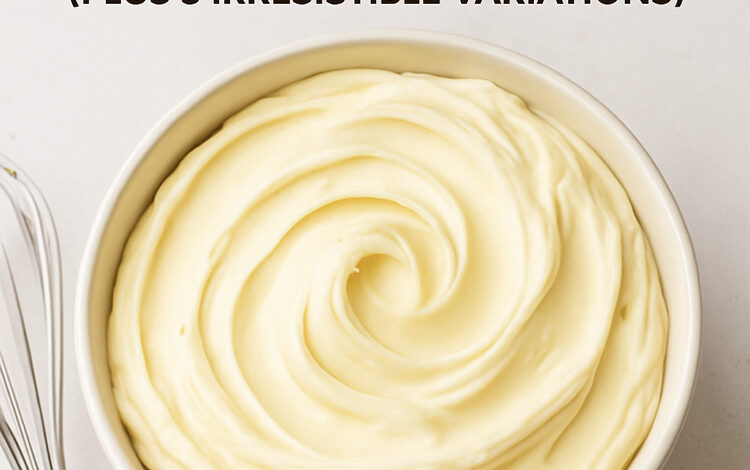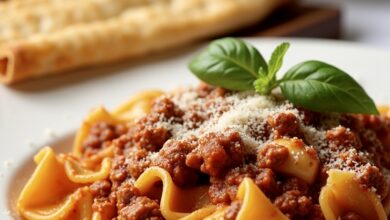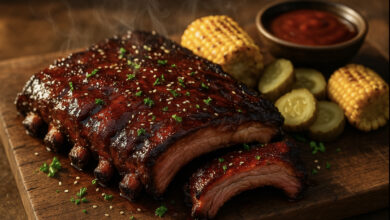How to Make Perfect Buttercream Every Time (+ 3 Variations)

Buttercream frosting is one of those recipes every baker should master. Whether you’re decorating a birthday cake, topping cupcakes, or filling a layered dessert, buttercream transforms simple bakes into bakery-quality creations. Smooth, creamy, and versatile, it’s a staple in both home kitchens and professional pastry shops.
Yet, many home bakers struggle with getting buttercream just right—sometimes it’s too sweet, sometimes it splits, and other times it feels heavy instead of airy. Don’t worry: with the right method and a few expert tips, you’ll be able to make perfect buttercream every single time.
This article will walk you through:
- The secrets to consistently smooth, stable buttercream
- A foolproof Swiss Meringue Buttercream recipe
- Three irresistible flavor variations (coffee, chocolate, and berry)
- Troubleshooting tips to fix common mistakes
Let’s dive in and master the art of buttercream frosting.
Why Buttercream Frosting Matters
Buttercream isn’t just “frosting.” It’s the finishing touch that balances flavor, texture, and presentation. A well-made buttercream:
- Adds creaminess that balances the sweetness of cakes
- Creates a smooth surface for piping and decorating
- Holds cake layers together for stability
- Elevates desserts from homemade to professional-looking
From wedding cakes to simple cupcakes, buttercream is a baker’s best friend. Once you master it, you’ll never go back to store-bought frosting again.
The Keys to Making Perfect Buttercream
To get bakery-quality buttercream at home, you need to focus on three key factors:
1. Use Quality Butter
The star of this recipe is butter—so quality matters. Always choose unsalted butter with at least 82% butterfat. European-style butters are an excellent choice because they’re creamier and richer. Make sure your butter is softened to room temperature before you start. Press it with your finger—it should be pliable but not melted.
2. Control Temperature
Temperature is everything in buttercream. Cold butter won’t blend properly, and melted butter will turn greasy. If you’re making Swiss Meringue Buttercream, heating the egg whites and sugar to the right temperature ensures both food safety and a silky texture.
3. Emulsion Is the Secret
Buttercream is an emulsion of fat and sugar (or meringue). Add butter slowly, one tablespoon at a time. This creates a smooth, stable consistency. If it looks curdled, don’t panic—keep mixing. Most of the time, it will come back together beautifully.
Swiss Meringue Buttercream Recipe (Base Frosting)
This recipe makes about 6 cups of frosting—enough to generously frost a two-layer 8-inch cake or 24 cupcakes.
Ingredients:
- 4 large egg whites
- 1 ¼ cups (250 g) granulated sugar
- 1 ½ cups (3 sticks, 340 g) unsalted butter, softened
- 1 teaspoon pure vanilla extract
- Pinch of salt
Instructions:
- Heat the egg whites and sugar. Place them in a heatproof bowl over a saucepan of simmering water. Whisk constantly until the mixture reaches 140°F (60°C). The sugar should be fully dissolved.
- Whip into meringue. Transfer to a stand mixer fitted with the whisk attachment. Beat on high until stiff, glossy peaks form and the bowl feels cool to the touch (about 7–10 minutes).
- Add the butter. Switch to the paddle attachment. Add softened butter one tablespoon at a time, mixing well after each addition. Don’t rush this step—it ensures the emulsion forms correctly.
- Flavor and finish. Add vanilla extract and a pinch of salt. Continue whipping until the buttercream is silky smooth.
Now you have a perfect base buttercream that’s ready to pipe, spread, or flavor.
3 Irresistible Buttercream Variations
One of the best things about buttercream is how easily you can customize it. Here are three crowd-pleasing flavors:
1. Coffee Buttercream
Add 2 tablespoons of strong espresso or coffee extract to your finished buttercream. This rich and aromatic version pairs beautifully with chocolate cakes, mocha cupcakes, or a classic French coffee cake.
2. Chocolate Buttercream
Melt 5 ounces (150 g) of dark chocolate, let it cool slightly, and fold it into your buttercream. This version is rich, decadent, and perfect for layer cakes, brownies, or cupcakes.
3. Berry Buttercream
Simmer 1 cup of raspberries, strawberries, or mixed berries into a puree, reducing it until thick. Cool completely, then beat it into your buttercream. This fruity version adds freshness and a beautiful natural color—ideal for summer desserts and wedding cakes.
Troubleshooting Buttercream Problems
Even the best bakers run into buttercream mishaps. Here’s how to fix them quickly:
- Buttercream looks curdled: Keep mixing—it usually smooths out as the butter emulsifies.
- Too soft: Chill in the fridge for 10 minutes, then whip again.
- Too stiff: Warm the bowl slightly over steam for a few seconds, then whip.
- Too sweet: Add a pinch of salt or a squeeze of lemon juice to balance the flavor.
Pro Tips for Professional Results
- Use a stand mixer for best results—it saves time and creates a lighter texture.
- Always scrape down the bowl to ensure even mixing.
- For piping, chill your buttercream for 10–15 minutes before filling the piping bag.
- Store leftovers in an airtight container in the fridge for up to a week, or freeze for up to three months.
Final Thoughts
Buttercream is more than just frosting—it’s the crown jewel of cakes and cupcakes. Once you understand the essentials—quality butter, proper temperature, and patience with the emulsion—you’ll never fear making buttercream again.
With this base recipe and the three variations (coffee, chocolate, and berry), you can whip up a buttercream that’s not only delicious but also versatile enough for any occasion. Whether you’re a beginner baker or a seasoned pro, this guide will help you create silky, bakery-style buttercream every time.
So grab your mixer, soften your butter, and get ready to impress—your next dessert deserves nothing less than perfect buttercream.


